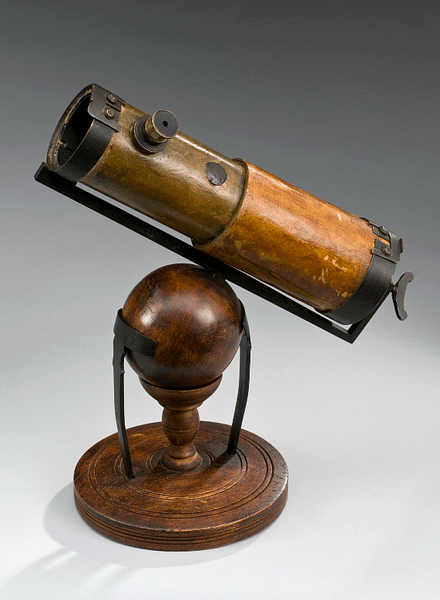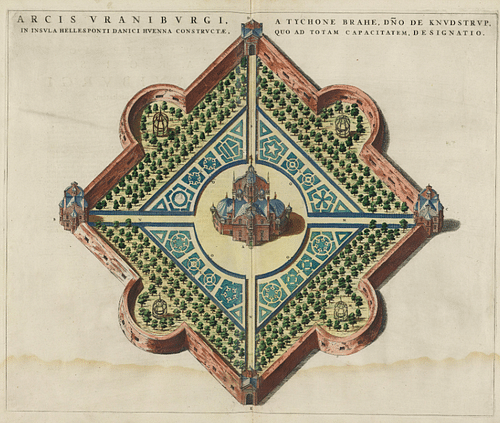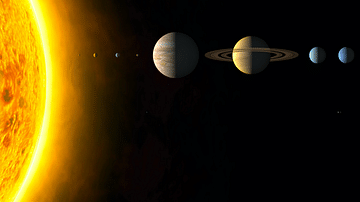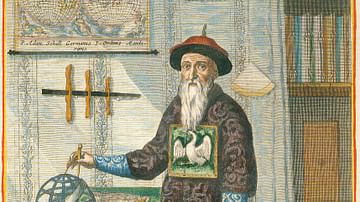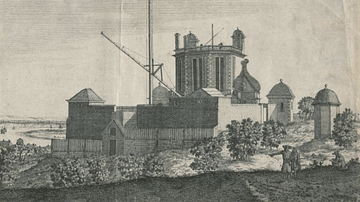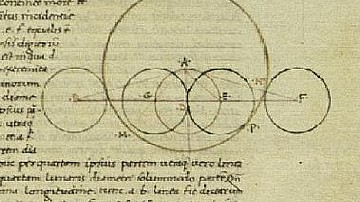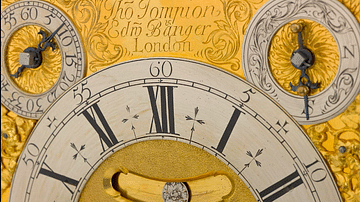The foundation of observatories during the Scientific Revolution (1500-1700) followed a process of evolution from entirely independent observatories operated by a single astronomer to private observatories which received state or private funding to observatories which were entirely state-run institutions. The latter category became permanent features of a nation's scientific endeavours across the globe, and most still continue their work today.

The Purpose of Observatories
Observatories were present in the ancient world and, in the Middle Ages, in the Muslim world. All that was needed was a stable platform open to the skies. Another useful provision was a north-south wall where a mural quadrant could be drawn or painted. A major observatory in the Muslim world was the Maragheh Observatory in Persia, founded in 1259, one of the first institutions to test theories of the cosmos against systematic observations of the heavenly bodies. It perhaps provided the model for another famous observatory, the early 15th-century Ulugh Beg Observatory in Samarkand in what is today Uzbekistan. Curiously, in Europe, observatories remained private affairs until the second half of the 17th century. Private astronomers needed a certain amount of money since their instruments could be expensive, especially when they evolved from relatively simple quadrants and sextants to high-tech telescopes using precision sights.
Despite a lack of formal institutions for most of the Scientific Revolution, many governments and rulers remained enthusiastic supporters of the astronomers and their private observatories, since more accurate charts of the stars meant navigation by sea could be easier, safer, faster, and cheaper, both for trading ships and navies. This relationship was a continuation of the close ties that had always existed between astronomers and rulers in their traditional capacity as astrologers, that is, diviners of future events. Astrology remained an important field of study, but by 1600, there had already begun a clear separation between it and the more scientific field of astronomy.
A distinct feature of the Scientific Revolution was an emphasis on sharing research and data. This was especially so in astronomy where astronomers greatly benefitted from comparative readings of the same events taken from different geographical locations. Astronomers across Europe corresponded with each other, and scientific academies and societies published new works and further encouraged international cooperation. In this way, great leaps forward were made in our knowledge of the heavens and in the accuracy of astronomical tables and charts of the stars. This increase in knowledge not only transformed cartography but also revolutionised thinking, as many age-old theories of natural philosophy concerning the Earth's relation to the Sun, Moon, and other heavenly bodies were overturned and replaced by a whole new vision of the universe and humanity's place in it.
The Evolution of Instruments
The essential instruments of an observatory were the quadrant, the sextant, and a time-keeping device. Using the naked eye, these instruments were used to measure the precise movements of heavenly bodies. Developments in telescope design affected observatories. Invented around 1608, perhaps by Hans Lippershey (c. 1570 to c. 1619), a Flemish spectacle-maker, the refracting telescope – with a concave and convex lens at either end of a tube – was perfected by the Italian astronomer Galileo (1564-1642). Galileo's instrument was 60 cm (24 in) long with an astonishing x33 magnification. The German astronomer Johannes Kepler (1571-1630) then came up with the innovation of the astronomical telescope in 1611. This instrument used two convex lenses for a sharper image, but it had the disadvantage that the image was seen upside down. The astronomical telescope did eventually catch on from the 1640s.
The British scientist Isaac Newton (1642-1727) designed a reflective telescope in 1668. This type of telescope used a curved metal mirror that improved image clarity. Newton's telescope had a magnification of x40 and was ten times shorter than the standard telescope. Around the same time, the Dutch astronomer Christiaan Huygens (1629-1695) made a massive aerial telescope in 1686, the world's biggest. Dispensing with the tube and keeping only the lenses set far apart, Huygens' telescope had a focal length of 67 metres (210 ft). Other innovations in astronomical instruments included adding telescopic sights to traditional instruments like the quadrant and then adding micrometers to these sights to take even more precise measurements, especially of angles. There were also double telescopes, which allowed two observers to view the same object.
Tycho & Uraniborg
One of the first observatories to be built in the early modern period in Europe was in central Germany. Here in 1564, William IV of Hesse-Kassel (1532-1592), himself a keen astronomer, provided the necessary funds. This observatory and others like it were temporary and had a specific function. Another example of a temporary observatory is in Rome, established by Pope Gregory XIII (in office 1572-1585). Here astronomers had the task of confirming the inaccuracy of the existing calendar.
The first major purpose-built observatory was the idea of the Danish astronomer Tycho Brahe (1546-1601). Tycho was given Hven (Ven) island by King Frederick II of Denmark and Norway (r. 1559-1588), and here, he built the observatory he called Uraniborg from 1576. It was named after Urania, the Greek muse of astronomy and translates as "the fortress of Urania". The main building included observation platforms, a huge mural quadrant, and extravagant, eastern-looking spires. There were gardens laid out in precise geometrical fashion, and the whole complex was surrounded by high walls. There was an instrument workshop, a printing press to publish Tycho's research, and a basement laboratory for alchemy. Tycho was assisted in his work at Uraniborg by his wife Kirstine and his sister Sophie.
Uraniborg became a tourist attraction, with such noted visitors as the future James I of England (r. 1603-1625). In 1597, when Tycho fell out of favour with the monarchy, he was obliged to leave Uraniborg, and the observatory fell into decay. Tycho moved to Prague, but his last great project came to nothing: to build an observatory in Egypt to map the more southern stars. Back in Denmark, Tycho's pupil Longomontanus (1562-1647) persuaded the monarchy to fund a new observatory, this time in Copenhagen in a building known as the Round Tower, completed in 1656.
University Observatories
The first university observatory was established in 1633 at the University of Leiden, the Dutch Republic's foremost institution of learning. It was a project pushed through by Jacob Golius (1596-1667) who was a professor of mathematics at the university. Although only set up on the university's roof, it did boast a massive 7-foot-high (2.13 m) quadrant. The idea of a permanent observatory was soon replicated at other universities across Europe, notably at Ingolstadt in Bavaria in 1637. It was still single astronomers, though, who developed the most impressive observatories.

Hevelius & Stellaeburg
In 1641, the Polish astronomer Johannes Hevelius (1611-1687) established an observatory in Danzig (Gdańsk), funding the project himself. He was assisted by his wife and such future talents as Gottfried Kirsch (1639-1710). Hevelius was known as the "Prussian Lynx" (Vertesi, 213) for his sharp observational skills. Once established, Hevelius attracted investment from several Polish kings and Louis XIV of France (r. 1643-1715). Hevelius called his observatory Stellaeburg, and it became such a local talking point that, in 1660, it was visited by King John II of Poland (r. 1648-1668). At Stellaeburg, Hevelius made several important discoveries. He observed the first variable star – a star that varies in brightness over time – which Hevelius called Mira. He identified four new comets (1652, 1661, 1672, and 1677). He observed the rare transits of Mercury and Venus moving across the Sun. He also discovered that the Moon oscillates, and he systematically observed and mapped its surface.
Hevelius' observations were made using a purpose-built telescope that measured 46 metres (150 ft) in length. He made the instrument himself, including the specially ground lenses, in 1647. Hevelius did remain loyal to non-telescopic instruments – his sextant, quadrant, and two pendulum clocks – when he was measuring the long-term movement of the heavenly bodies. And he was remarkably accurate in doing so. In 1679, when the English astronomer Edmond Halley (1656-1742) visited Stellaeburg; he compared Hevelius' data with his own readings using a telescope and discovered that Hevelius' data was remarkably accurate. Tragedy struck Stellaeburg on 26 September 1679 when it was destroyed by a fire, probably started maliciously. Hevelius rebuilt his instruments and observatory so that he could complete his life's work: Prodromus Astronomiae, a comprehensive illustrated catalogue and celestial atlas of 1,564 stars. Hevelius' observatory was the last private one to make a significant contribution to the field of astronomy. Henceforth, it would be observatories attached to permanent institutions and governments that dominated what had become the first true science.
Edmond Halley & St. Helena
Earlier astronomers had fully realised the value of taking observations of the skies from different geographical locations, but it was Edmond Halley who became the first globetrotting scientist. Halley sailed to the island of St. Helena in the South Atlantic, arriving there in 1677. The expedition was funded by the English treasury, and a ship was provided by the East India Company (EIC). Tiny volcanic St. Helena, then owned by the EIC, was the only British-held territory in the southern hemisphere. In an age of growing global empire and trade, both the treasury and the EIC were greatly interested in improving navigational accuracy.
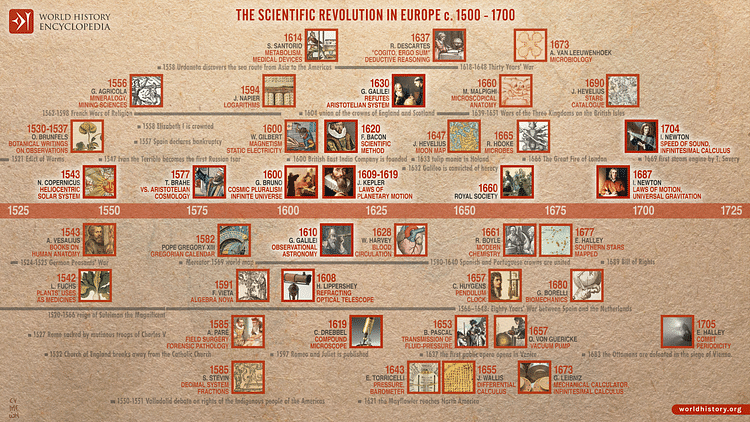
Halley established an observatory on St. Helena and proceeded to take observations over a period of two months. The island's notorious ability to attract cloud cover did not help, but enough readings were taken so that Halley could make the first chart of the stars of the Southern Hemisphere, based on observations made via telescope. The chart set the position of 341 stars. Other notable work on St. Helena included Halley's detailed observation of a total lunar eclipse and a rare observation of the transit of Mercury across the Sun. In an example of the ever-more frequent cooperation between international scientists, the latter readings were later compared with those taken by French astronomers who observed the same phenomenon from Avignon. Halley published his St. Helena work in 1678, and he was consequently made a fellow of the Royal Society.
Paris Observatory
Astronomy became more sophisticated with ever-more regular and precise observational readings required using expensive telescopes. This meant that the days of single astronomers working alone were numbered. There was also a shift away from individuals to an institution that existed permanently no matter who was working there. State-backed observatories had the advantage of greater funding, but there was the necessity for astronomers to come up with work of practical use to the state. This may explain why some astronomers still preferred to go it alone and work entirely independently; the Danish astronomer Ole Rømer (1644-1710) is one example.
The Paris Observatory was founded in 1667 and was also the seat of the Royal Academy of Sciences and the Royal Botanical Gardens. Collectively, these three bodies made "Paris the centre of European science" (Burns 2015, 104). The building, located to the south of the French capital, was completed in 1672 and its design reflected its purpose as a general place of science, not only astronomy. For example, there was a giant staircase from which objects could be dropped and their descent measured. There was, too, a chemistry laboratory. The observatory's key work was helping the Academy to create a new map of France and improve navigational charts.
Louis XIV was determined to create a scientific institution that was the envy of Europe and so he attracted talent from far and wide with handsome salaries. The Italian astronomer Gian Domenico Cassini (1625-1712) was one such figure, and he (and his descendants) became the leading figure at the observatory. Like several other scientists, Cassini lived in apartments within the observatory. Cassini and others in Paris shared their data with astronomers in other parts of the world to gain more accurate data of certain phenomena. One example was the comparison of readings on the parallax of Mars with Jean Richer (1630-1696), who was based across the Atlantic in Cayenne in French Guiana. The Paris Observatory regularly sent out astronomers to take readings in far-flung places such as French Canada, the northern coast of South America, and the western coast of Africa.
The Paris Observatory included on its staff some notable innovators and discoverers. Cassini famously identified the spaces in the rings of Saturn, called today "Cassini's division", he was the first to spot another four moons of Jupiter (Galileo had spotted the first four), and he calculated more accurately than ever the distance between the Sun and the Earth (87 million miles). Christiaan Huygens, already mentioned, worked for a time at the observatory. The astronomers Jean Picard (1620-1682) and Adrian Auzout (1622-1671) came up with telescopic sights incorporating tiny moveable wires (a micrometer) that allowed the viewer to more precisely measure movements. Another achievement of the Paris observatory was the discovery of zodiacal light (diffused sunlight that gives a glow to certain heavenly bodies). The Paris Observatory continues its work today.
Greenwich Observatory
Charles II of England (r. 1660-1685), no doubt with his eyes on Louis XIV's success in Paris, funded his own institution in Greenwich, just outside London. Founded in 1675, John Flamsteed (1646-1719) was one of its key astronomers. The other founding members were Robert Hooke (1635-1703), chief experimenter at the Royal Society, Christopher Wren (1632-1723), architect extraordinaire, and Jonas Moore (1617-1679), Surveyor of the Ordinance. Wren, Moore, and Hooke designed the new building, although a lack of funding meant the original plans were never fully realised.

Greenwich was not as well funded as the Paris Observatory; Flamsteed, the Royal Astronomer, was given only a modest salary and was expected to pay for his instruments himself. Flamsteed's salary was £100 a year, but the cost to have a mural quadrant installed in the observatory was £120. There were other problems, too, such as an unclear relationship with the Royal Society, which led to conflicts. Flamsteed, for example, was unhappy that the society had given money for Halley's St. Helena expedition when this money might have been better spent on new astronomical equipment.
The observatory did attract talent. Halley, for example, was in charge from 1719 until 1742. It also had generous private donors like Moore, who paid to install state-of-the-art technology like two pendulum clocks, each with a giant pendulum measuring almost 4 metres (13 ft) in length. Each clock had a different kind of mechanism to ensure the astronomers knew the exact time their observations of the heavens were made. Government grants to pay for equipment, in contrast, became entirely dependent on the scientists finding information useful for navigation, particularly creating astronomical charts that might allow navigators to accurately measure their longitude. Greenwich became the prime meridian and centre of the world time system (GMT or Greenwich Mean Time) in 1884.
The Global Growth in Observatories
Georg Marcgrave (aka Markgraf, 1610-1644) established an observatory on the island of Recife, then part of Portuguese Brazil in 1638. This was the first observatory in the Southern Hemisphere. Jesuit missionaries had presented the Chinese emperor with a telescope in 1634. By the 1670s, the Jesuit missionary Ferdinand Verbiest (1623-1688) famously used Tycho Brahe's book Instruments for the Restoration of Astronomy to build instruments for the imperial observatory in Beijing, China.
The success of the state-backed observatories in Paris and Greenwich led to a greater interest in astronomy from other states. In 1700, the Berlin Academy was founded. The Ottoman Empire (1299-1922) had briefly had an observatory in Constantinople (Istanbul) from 1577 to 1580 until anti-Western factions had it closed down. Ottoman interest revived in 1721 when an envoy, one Yirmisekiz Mehmed Çelebi, was twice dispatched to Paris to report on what had been happening in Western astronomy over the last century. In 1724, Peter the Great (r. 1682-1725) established the Imperial Academy of Sciences in St. Petersburg. The Academy included an observatory, and so Russia became a member of the ever-growing "community of nations that exchanged scientific information and worked within the same intellectual framework" (Burns 2015, 145).
Observatories using telescopes sprang up in unlikely places, such as the Kingdom of Siam (Thailand) in the 1680s. Located at Narai, the royal court, the observatory was just one of King Narai's (r. 1656-1688) scientific projects, the monarch being an admirer of Western science and a keen collector of clocks and star maps. King Narai even sent an embassy to Paris to learn what they could.
Another surprising new observatory was built in Jaipur in India in the 1720s. One of the Indian Princely States, its ruler, Jai Singh II (1688-1743), was keen to bring together Hindu, Islamic, and Western expertise in astronomy. Consequently, Jaipur boasted several observatories, and Singh sent a delegation to Lisbon to compare astronomical data and acquire the latest scientific instruments.
Despite all of these international interactions, astronomy waned after the Scientific Revolution until it was revived by an injection of new technology. In the 19th century, observatories became ever more sophisticated and useful for understanding the universe thanks to more powerful telescopes with clearer lenses and wider apertures that could be used to observe even very faint objects. Then, beyond the imagination of the astronomers of the Scientific Revolution, whole new worlds became observable at the end of the 20th century when observatories, most famously the Hubble telescope, were moved into space itself.
